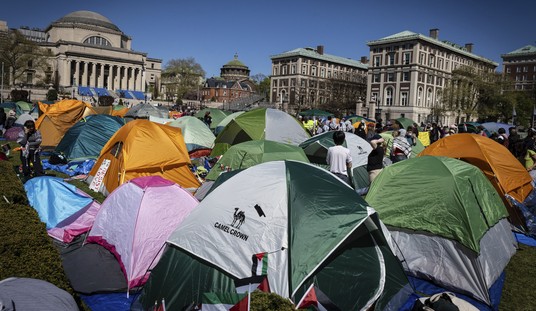In the 2002 book co-authored with Ruy Teixeira, John B. Judis’s argument in favor of an “emerging Democratic majority” was a compelling one.
The theory held that a rising coalition of Democratic voters and shifts in the nation’s demographic makeup would create the conditions in which Democrats would find it easier to win statewide and national office. For a time, this prediction appeared prescient.
Writing in The Atlantic on the ten year anniversary of The Emerging Democratic Majority’s publication, Teixeira highlighted a paragraph that summed up their theory. He posited that the Democrats’ winning coalition was evident as long ago as 1972, a year in which the party suffered a crippling national loss to Republicans and President Richard Nixon.
What did it matter if McGovern won Alameda County and San Francisco but decisively lost Los Angeles and San Diego? Or that he did better among working women than men, and among professionals than blue collar workers, but still lost a majority of all these voters? Thirty years later, however, these anomalies loom larger. Women are still voting more Democratic than men, but they are also voting much more Democratic than Republican, particularly women who now work outside the home, single women and women with college degrees. Minorities, once about ten percent of the voting electorate, now constitute nineteen percent…They, too, are continuing to vote Democratic. Democrats are winning even more decisively in college towns, and these towns and their schools have become linked to entire regions like Silicon Valley and North Carolina’s Research Triangle. And, skilled professionals have become a much larger and a dependably Democratic voting group.
It is important to note what Judis and Teixeira do not argue. “Judis and Teixeira don’t argue, for instance, that Democrats are predestined to hold a permanent majority for several decades,” The New York Times analyst Nate Cohen wrote for The New Republic. “Nor do they contend that Democrats can abandon white working-class voters.” The EDM thesis rests on the notion that the coalition of voters that Democrats have built over the decades will be able to withstand the occasional bad election cycle and remain largely stable.
But, while taking a victory lap in the wake of President Barack Obama’s 2012 reelection victory, Teixeira inadvertently identified the fatal flaw in his and Judis’s theory: Voters expected results from the party in which they had vested new authority.
Today’s Americans…want government to play an active and responsible role in American life, guaranteeing a reasonable level of economic security to Americans rather than leaving them at the mercy of the market and the business cycle. They want to preserve and strengthen Social Security and Medicare, rather than privatize them. They want to modernize and upgrade public education, not abandon it. They want to exploit new bio-technologies and computer technologies in order to improve the quality of life. They do not want science held hostage to a religious or ideological agenda. And they want the social gains of the sixties consolidated, not rolled back; the wounds of race healed, not inflamed.
Much of this analysis is a product of its period. After six years of Democratic governance, Americans are no longer confident that Democrats can deliver economic security. They are skeptical of the long-term viability of the welfare state. They are deeply suspicious of the institution of public education and its ability to provide a future for their children. And they have no illusions about the Democratic Party’s commitment to healing racial divisions.
Following two consecutive disastrous midterm elections into the Obama-era, the Democratic Party is in its worst position in 90 years. Democrats have lost majorities in the House and the Senate – in the former, Republicans hold a majority that is the largest it has been since Al Smith ran a quixotic campaign for the White House as an urban progressive reformer and lost 40 states. On the legislative level, Republicans now control 69 of 99 state-level chambers; the Democratic Party’s “farm team” has been decimated. A whole generation of aspiring Democratic officeholders saw their careers cut short under Obama’s tenure in the Oval Office.
It’s long past time to revisit the “emerging Democratic majority” theory and, in the pages of National Journal this month, Judis did just that. He noted that the Democratic Party has continued to “hemorrhage” white working-class voters at a pace that seems to have accelerated in the 13 years that have elapsed since EDM’s publication. What’s more, Republicans have surprised Judis by proving quite competitive among formerly disaffected Democratic voters in blue-collar and “lower-income service” occupations. “Call them middle-class Americans,” Judis postulated.
He added that issues like the size of government and taxes have become key factors for voters in once reliably Democratic states like Maryland. “Some Democrats tried to attribute [former Lt. Gov. Anthony] Brown’s defeat to racism, but Brown was a bland technocrat in the mold of former Massachusetts Gov. Deval Patrick,” Judis noted. “Instead, it appears that the [Maryland gubernatorial] election hinged on taxes and the size of government—the questions to which middle-class voters so often seem to return.”
After the 2008 election, I thought Obama could create an enduring Democratic majority by responding aggressively to the Great Recession in the same way that Franklin Roosevelt had responded in 1933 to the Great Depression. Obama, I believed, would finally bury the Reagan Republican majority of 1980 and inaugurate a new period of Democratic domination.
In retrospect, that analogy was clearly flawed. Roosevelt took power after four years of the Great Depression, with Republicans and business thoroughly discredited, and with the public (who lacked any safety net) ready to try virtually anything to revive the economy. Obama’s situation was very different. Business was still powerful enough to threaten him if he went too far in trying to tame it. Much of the middle class and working class were still employed, and they saw Obama’s stimulus program—which was utterly necessary to stem the Great Recession—as an expansion of government at their expense.
…
It now appears that, in some form, the Republican era which began in 1980 is still with us. Reagan Republicanism—rooted in the long-standing American distrust of government, but perhaps with its roughest theocratic and insurrectionary edges sanded off for a national audience—is still the default position of many of those Americans who regularly go to the polls. It can be effectively challenged when Republicans become identified with economic mismanagement or with military defeat. But after the memory of such disasters has faded, the GOP coalition has reemerged—surprisingly intact and ready for battle.
“Coalitions are like water balloons,” Real Clear Politics analyst Sean Trende wrote in 2013. “You push down on one side, and another side pops up.”
“The actions of the GOP might hurt it with some groups, but good analysis acknowledges that the same is true for Democrats,” he continued. Trende has argued that American political coalitions come together and break apart regularly, and there is no such thing as a permanent anything in American politics. In The National Journal, Judis argues that Republicans are the beneficiaries of an “emerging” electoral “advantage.” Republicans would be well-advised not to take Judis’s word for it.








Join the conversation as a VIP Member